Kenya AA Top Azaria Coffee hand brewing parameters suggest which brand of Kenyan coffee tastes good
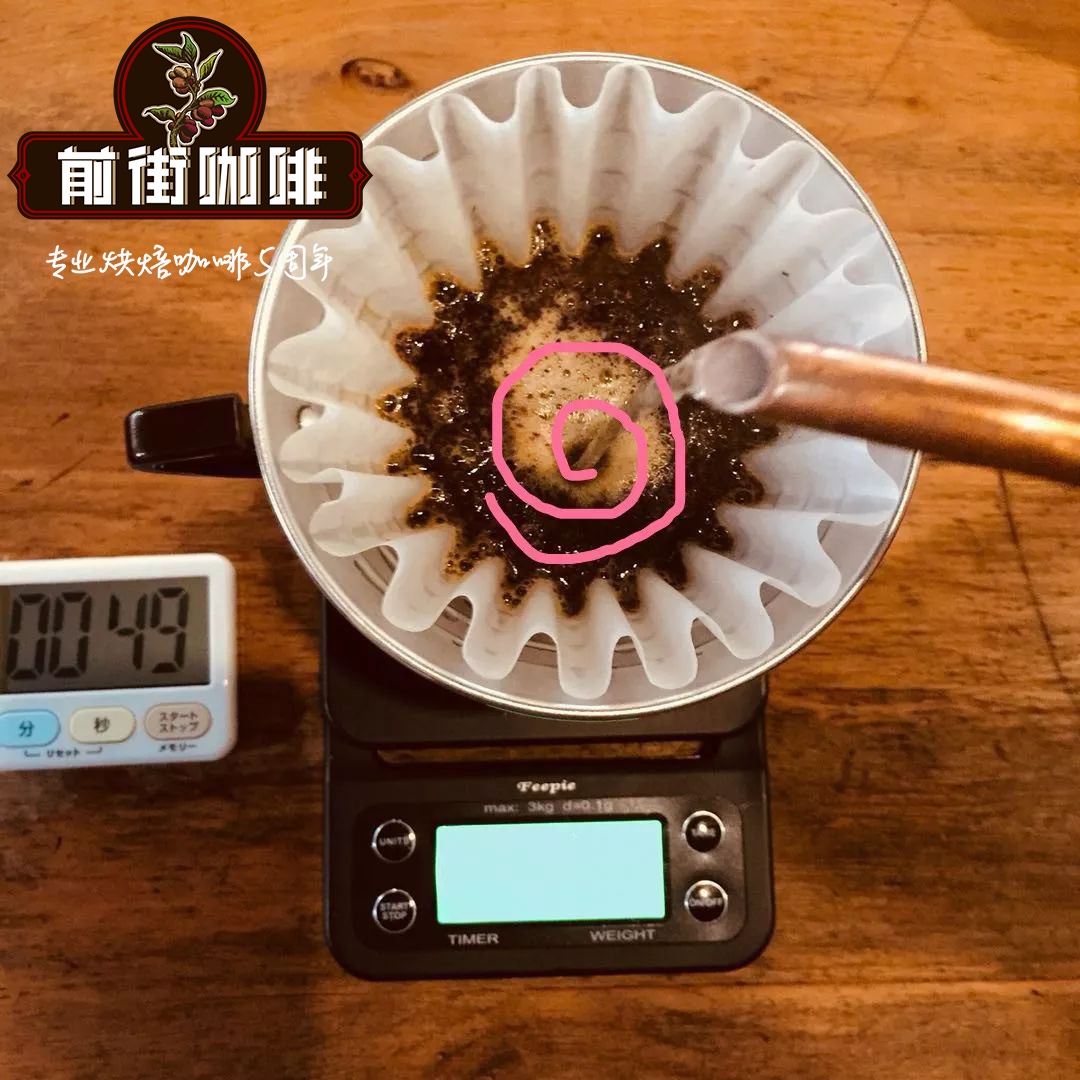
Professional coffee knowledge exchange more coffee bean information please follow the coffee workshop (Wechat official account cafe_style)
African coffee is a leader in boutique coffee, occupying a very high position, bright and lively fruit acid, complex and rich fruit aroma, elegant and fresh flower aroma, how can one not like it? The famous coffee producing areas in Africa are Ethiopia and Kenya. Ethiopia talks a lot. Today we are going to talk about Kenya.
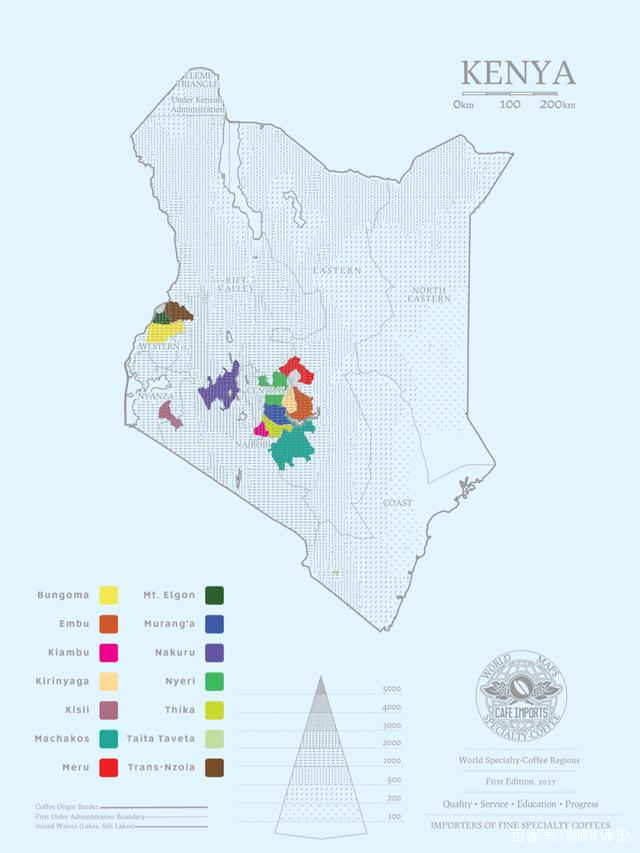
A circle around the earth is the story of the first love.
As we all know, coffee originated in Ethiopia in Africa and was discovered as early as the 9th century. However, neighboring Kenya did not introduce coffee until near the 20th century, during which coffee went around the world almost all the way back to Africa. And at that time, the coffee industry began to have new changes, and Kenya can be said to be the witness and promoter of this change.
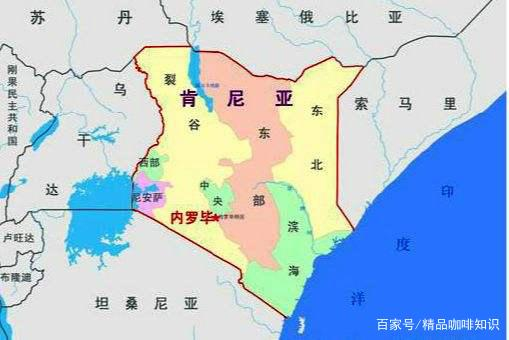
The History of Kenyan Coffee
In 1878, the British landed coffee in Africa and set up a coffee plantation in Kenya in the 19th century, when Ethiopian coffee drinks were imported to Kenya through southern Yemen. But it was not until the beginning of the 20th century that the bourbon coffee tree was saint. The Austin Mission (St.AustinMission) was introduced to Kenya.
Kenya, located in East Africa, is one of the major coffee producing countries. More than 6 million people in the country are engaged in the coffee industry, mostly in the form of a combination of small farmers and cooperatives. Coffee trees in Kenya are mostly planted at 1400 m-2000 m above sea level, and the growth areas include Ruiri, Thika, Kirinyaga and Mt. Kenya West, Nyeri, Kiambu and Muranga, mainly in the foothills of Mt.Kenya and Aberdare.
The central peak of Kirinaga (Mount Kenya) is 5199 meters above sea level, and Sika ASALI TOP AA grows in Manyata-Enbu County on the eastern slopes of the Kenyan Mountains from 1550 to 1750. The red soil in this area breeds the best coffee in Kenya, where agriculture is extremely important; coffee is one of the most important crops. Common cooperatives made up of small farmers are more common than large manors. Coffee in TOPAA season is usually of higher quality than bourbon variants (SL-28) and (SL-34)
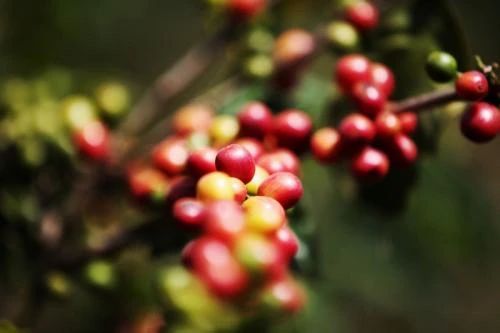
Two Kenyan varieties have particularly attracted the attention of the boutique coffee industry: SL-28 and SL-34. This is by Guy of the Scott Lab (Scott Laboratories). Two of the 40 experimental varieties identified by the research project led by Guy Gibson, the bourbon variants (SL-28) and (SL-34) have always been the winners of the expert cup Nerobi auction.
Coupled with the large temperature difference between day and night, as well as Kenya's red phosphate soil, sweet and sour has become the main flavor tone of Kenya. Beans have a great sense of sweetness, balance and complex flavor, as well as remarkable citrus, Wumei characteristics Kenyan 72-hour fermentation water washing method, Kenyan style is originated in Kenya to adopt the cycle of repeated treatment after fermentation, harvest the same day after the system, select the best quality cherries for peeling and fermentation, fermentation time is 24 hours, 24 hours after using clean river water to wash.
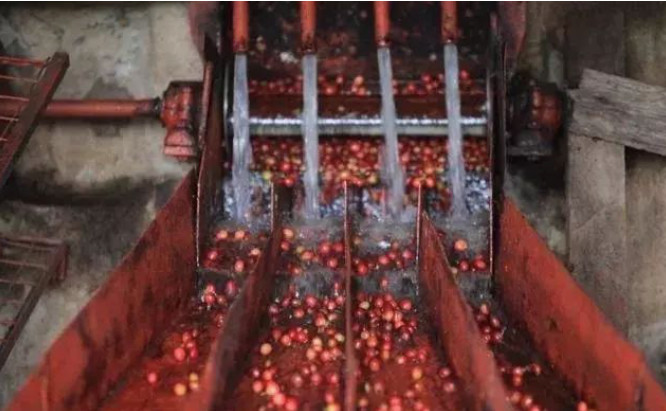
Then, it was fermented again with clean river water for 24 hours, then washed, and repeated 3 times for 72 hours, so it was called Kenyan 72-hour fermentation water washing treatment, abbreviated as [K72].
Kenyan coffee grade
Kenya is graded according to the particle size and cup test results of coffee beans. According to the size, shape and hardness of coffee beans, from high to low is AA or AA+, AB, PB, C, E, TT, T. For the raw coffee beans of AA grade and AB grade, the special classification of cup test results (not officially recognized by Kenyan countries, made by exporters) is added, and the order from high to low is TOP, PLUS (+) and FAQ.
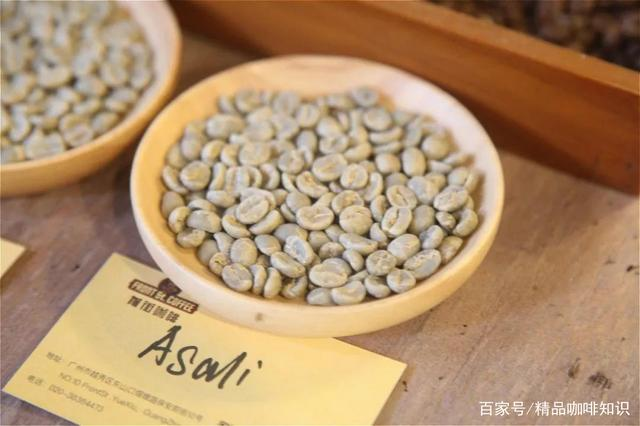
Take [Front Street Coffee Kenya Asalia Asali Coffee] as an example
Producing area: Sika Thika, Kenya
Processing plant: Asali honey processing plant
Altitude: 1550mi 1750m
Rating: AA TOP
Variety: SL28,SL34
Treatment: 72-hour washing in Kenya
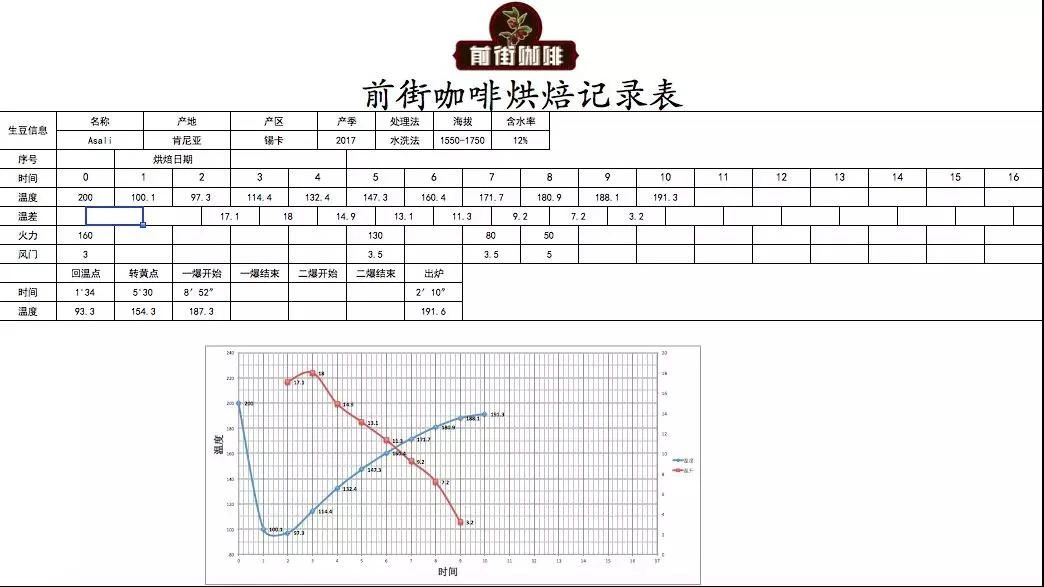
Baking suggestion
This bean is full and round, and in order to fully show its bright and mellow acid, it is baked in a light degree.
Machine: Yang family 800N, raw bean 550g
Input bean temperature: 200℃
Flashpoint: 5 minutes 39 percent 30 ", 154.3 ℃
After one explosion, the development was 2: 10 ", 191.6 ℃ came out.
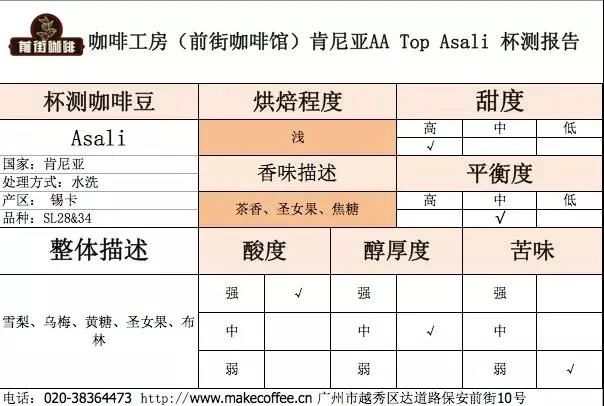
Cup test report
Strong dry and wet aromas of lemon and plum, shallow roasting with floral, lemon and other amazing aromas, green apple, berry, caramel, coffee berry sweet, bright and juicy, crisp sweet, plum juice, sweet and sour candied fruit, caramel at the end.
Cooking suggestion
Filter cup: Hario V60
Water temperature: 90 ℃
Amount of powder: 15g
Powder / water ratio: 1:15
Degree of grinding: medium and fine grinding (BG#6S)
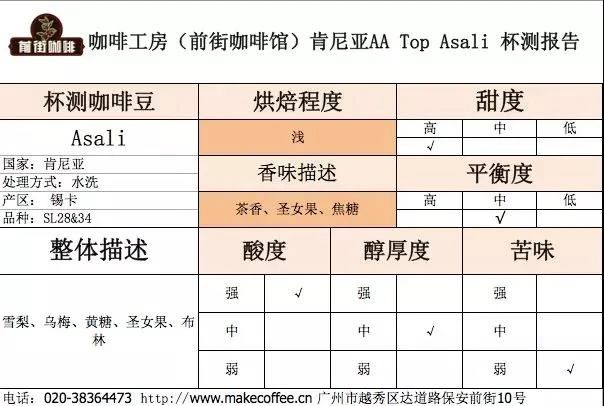
Washing and cooking technique
Segmented extraction
Steam with 30 grams of water for 30 seconds, small water flow around the circle to 125 grams for sectional injection, water level drop is about to expose the powder bed, continue to inject water to 225 grams to stop injection, and so on when the water level drop is about to expose the powder bed, remove the filter cup, (steaming starts timing) the extraction time is 2 minutes 39 percent 00 ".
Flavor description
Wet fragrance with ripe tomatoes and flowers, imported virgin fruit and black plum flavor, bright acidity, clean and the most solid and rich taste, like the weight of an African elephant! The middle part is sweet and juicy, with sweet berry and yellow sugar on the finish, with aromas of green tea.
Important Notice :
前街咖啡 FrontStreet Coffee has moved to new addredd:
FrontStreet Coffee Address: 315,Donghua East Road,GuangZhou
Tel:020 38364473
- Prev
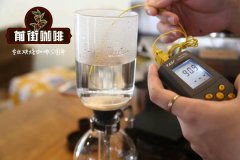
Introduction and roasting Analysis of AATOP Coffee in Asalia Cooperative Honey processing Plant in Sika, Kenya
Professional coffee knowledge exchange more coffee bean information please follow the coffee workshop (Wechat official account cafe_style) Coffee introduction Kenya Sika Asalia Cooperative Honey processing Plant AA TOP (Kenya Thika Asali Mugaga Cooperative) treatment: washing baking degree: shallow baking flavor description: the entrance can feel quite heavy and mellow
- Next

Asalia Cooperative and Honey processing Plant / Kenya AA TOP Coffee how to drink Kenya
Professional coffee knowledge exchange more coffee bean information Please pay attention to the coffee workshop (Wechat official account cafe_style) the charm of African beans is that most coffee beans are natural and unrestrained in the natural ecology, all the advantages are maximized, the disadvantages are also maximized. Like to be polarized with people you don't like. Kenya was once ruled by Britain, during that period
Related
- Detailed explanation of Jadeite planting Land in Panamanian Jadeite Manor introduction to the grading system of Jadeite competitive bidding, Red bid, Green bid and Rose Summer
- Story of Coffee planting in Brenka region of Costa Rica Stonehenge Manor anaerobic heavy honey treatment of flavor mouth
- What's on the barrel of Blue Mountain Coffee beans?
- Can American coffee also pull flowers? How to use hot American style to pull out a good-looking pattern?
- Can you make a cold extract with coffee beans? What is the right proportion for cold-extracted coffee formula?
- Indonesian PWN Gold Mandrine Coffee Origin Features Flavor How to Chong? Mandolin coffee is American.
- A brief introduction to the flavor characteristics of Brazilian yellow bourbon coffee beans
- What is the effect of different water quality on the flavor of cold-extracted coffee? What kind of water is best for brewing coffee?
- Why do you think of Rose Summer whenever you mention Panamanian coffee?
- Introduction to the characteristics of authentic blue mountain coffee bean producing areas? What is the CIB Coffee Authority in Jamaica?

